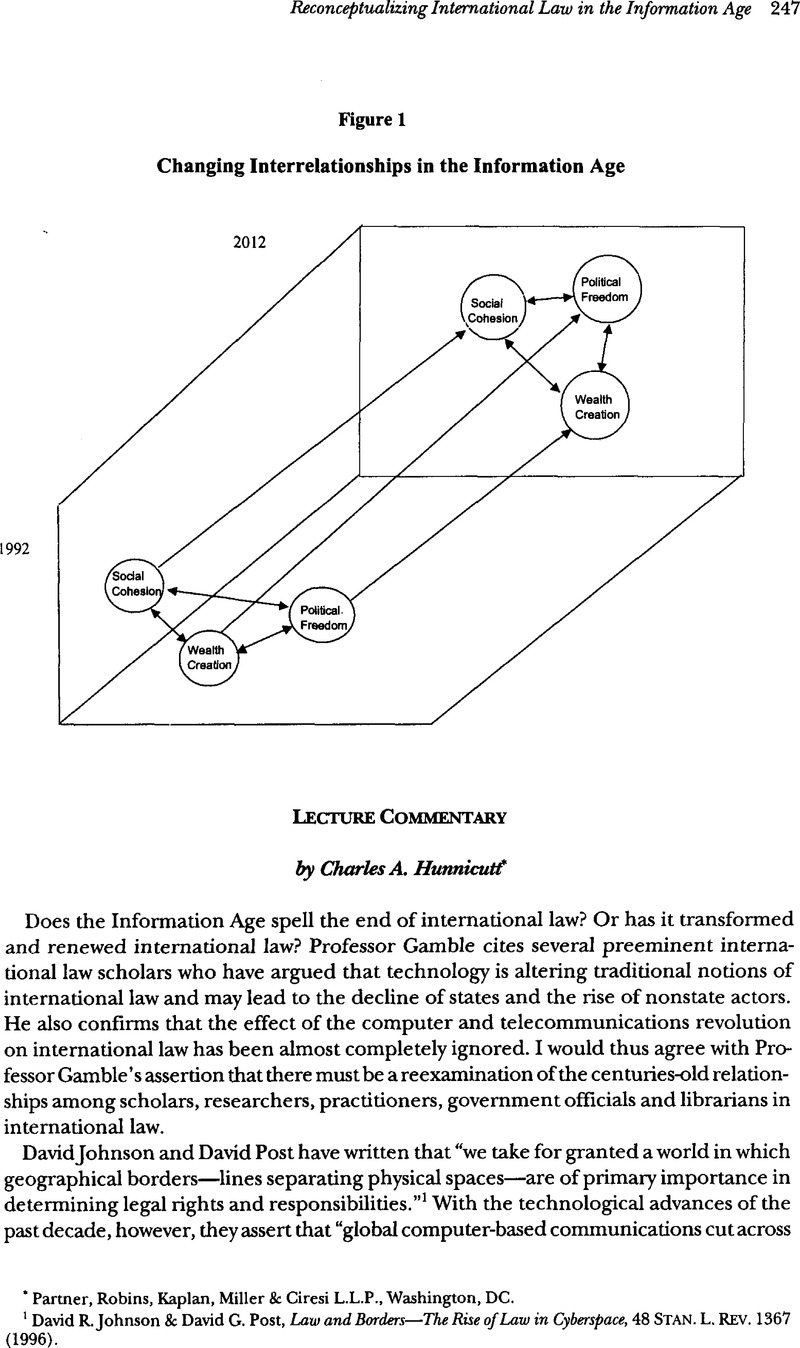No CrossRef data available.
Article contents
Lecture Commentary
Published online by Cambridge University Press: 28 February 2017
Abstract

- Type
- Reconceptualizing International Law in the Information Age
- Information
- Copyright
- Copyright © American Society of International Law 2002
References
1 Johnson, David R. & Post, David G., Law and Borders—The Rise of Law in Cyberspace, 48 Stan. L. Rev. 1367 (1996)CrossRefGoogle Scholar.
2 Id.
3 Milner S. Ball, Lying Down Together: Law, Metaphor, and Theology 27-28 (1985).
4 Slaughter, Anne-Marie, Governing the Global Economy through Government Networks, in The Role of Law in International Politics: Essays in International Relations and International Law 178 (Byers, Michael ed., 2000)Google Scholar.
5 Id.
6 Id.
7 See Rumsey, Mary, Runaway Train: Problems of Permanence, Accessibility, and Stability in the Use of Web Sources in Law Review Citations, 94 Law Libr. J. 1, 27 (2002)Google Scholar.
8 Link rot is “the problem of links that lead the reader to defunct sites.” Id at. 30 (citing Denmark, Howard A., The Death of Law Reviews Has Been Predicted; What Might Be Lost When the Last Law Review Shuts Down? 27 Seton Hall L. Rev. 1, 32n.77 (1996))Google Scholar.




